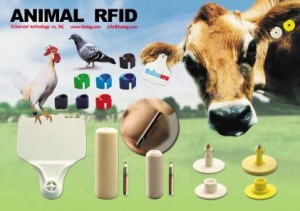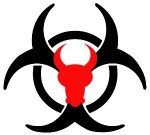
For Immediate Release
February 8, 2010Contact:
Shae Dodson-Chambers, Communications Coordinator
Phone: 406-672-8969; e-mail: sdodson@r-calfusa.com
Group Praises USDA for Decision to Abandon NAIS
Washington, D.C. — In a letter sent Friday to Agriculture Secretary Tom Vilsack, R-CALF USA President/Region VI Director Max Thornsberry, a Missouri veterinarian, thanked the United States’ top agriculture official for his “receptiveness to the interests of U.S. cattle farmers and ranchers.” On Friday, Vilsack announced he was revising his agency’s prior policy on animal disease traceability and would begin developing a new approach. The U.S. Department of Agriculture’s (USDA’s) prior policy was the National Animal Identification System (NAIS), a policy vehemently opposed by R-CALF USA and its numerous state affiliates.
“The Secretary has signaled he is going back to the drawing board to develop a new system that does not infringe upon the rights and privileges of U.S. cattle farmers and ranchers as did NAIS,” Thornsberry said. “This is exactly what we’ve been urging USDA to do for the past five years. Our organization has expended considerable resources trying to put a halt to NAIS, and we’re pleased that our members’ efforts have finally come to fruition.”
Thornsberry said NAIS was conceived and supported by international trade organizations, ear tag manufacturers and multinational meatpackers, and was all about controlling cattle farmers and ranchers and cattle markets, not about controlling and preventing animal diseases.
“Friday’s announcement is a major victory for independent cattle producers, as it marks the first time in a very long time that USDA did not suppress the interests of cattle producers in order to accommodate the self-interests of the dominant meatpackers and their allies,” he said.
R-CALF USA Animal Identification Committee Chair Kenny Fox said that the 8-point plan R-CALF USA submitted last year to USDA as an alternative to NAIS fits within the new framework described by Vilsack on Friday. Fox also serves as president of the South Dakota Stockgrowers Association (SDSGA), one of R-CALF USA’s largest affiliate organizations.
“Our plan called for the control of disease-related animal identification databases to be vested with state and tribal animal health officials, flexibility in the use of preexisting animal identification devices such as brucellosis tags, no federally mandated premises registration and a renewed emphasis in preventing the introduction of diseases at our borders, all of which are consistent with what USDA announced on Friday,” said Fox.
Thornsberry said this victory was made possible by the thousands of U.S. cattle farmers and ranchers who stood steadfast against NAIS despite the millions of dollars that USDA provided to states and many conventional agricultural organizations in an attempt to enroll as many independent cattle producers as possible into the flawed NAIS system.
“I couldn’t be prouder of R-CALF USA and our state affiliates that never waivered an inch against the extreme pressure applied to our industry by USDA under the previous Administration, by the multinational meatpackers and by the conventional industry trade associations with close ties to both the meatpacking industry and ear tag manufacturers,” he emphasized
“The next step will be to actually help USDA develop the details of this new approach to animal disease traceability, and we will remain directly involved to ensure that the interests of our nation’s independent cattle producers continue to be addressed in this process,” Fox concluded.
# # #
R-CALF USA (Ranchers-Cattlemen Action Legal Fund, United Stockgrowers of America) is a national, non-profit organization dedicated to ensuring the continued profitability and viability of the U.S. cattle industry. R-CALF USA represents thousands of U.S. cattle producers on trade and marketin! g issues. Members are located across 47 states and are primarily cow/calf operators, cattle backgrounders, and/or feedlot owners. R-CALF USA directors and committee chairs are extremely active unpaid volunteers. R-CALF USA has dozens of affiliate organizations and various main-street businesses are associate members. For more information, visit www.r-calfusa.com or, call 406-252-2516.




 One of the strongest speakers,
One of the strongest speakers,  The USDA has a
The USDA has a